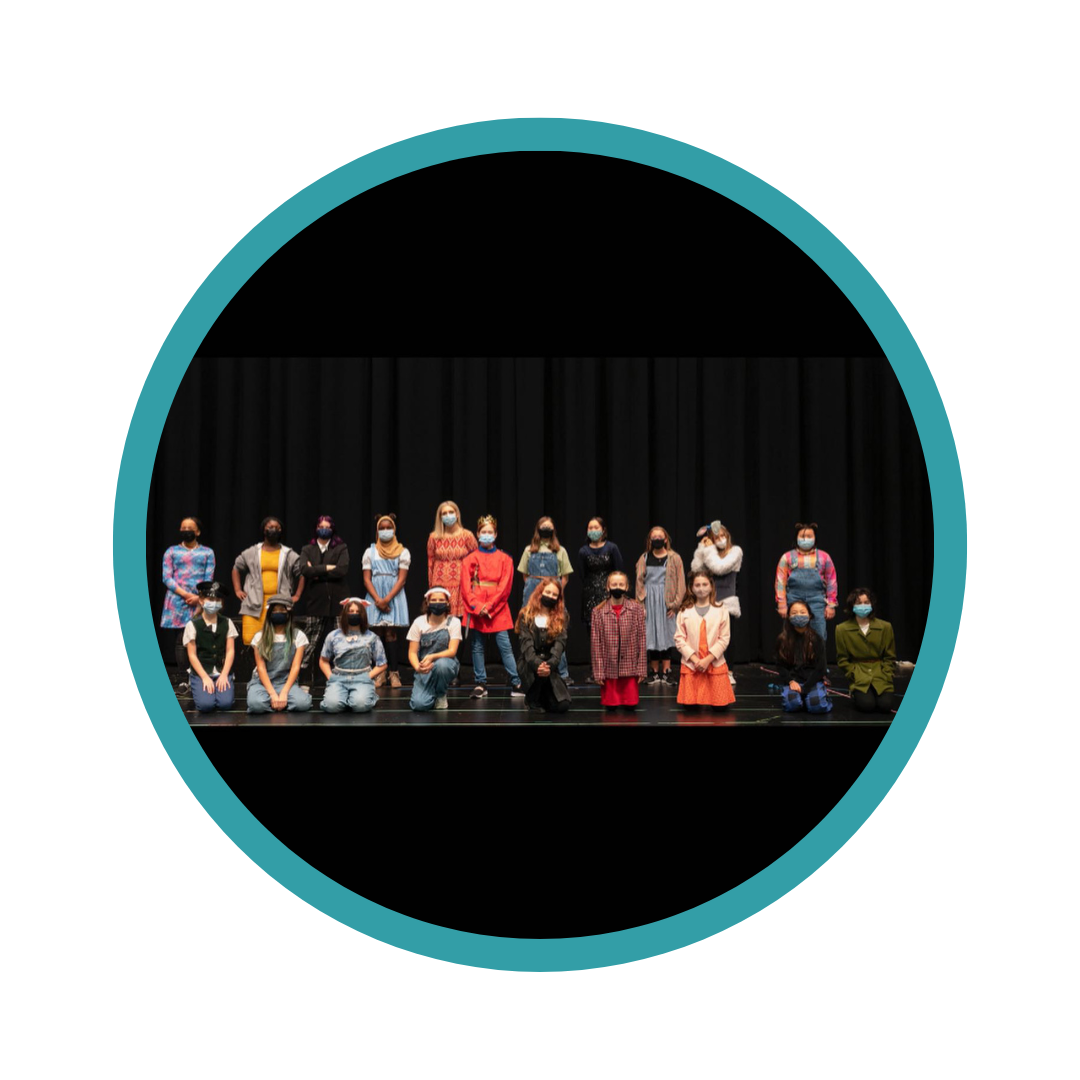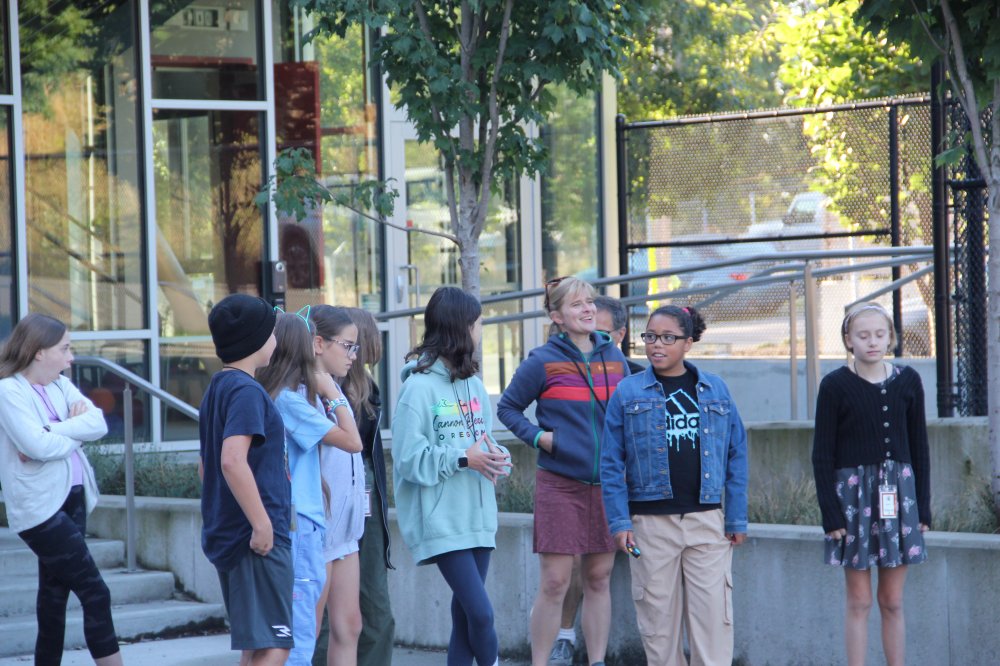6th Grade at L-Dub
The language arts class offers students a chance to grapple with big topics like identity and community while teaching skills in reading strategies, comprehension, and writing. In addition to learning the conventions of literary analysis and essay writing, students use creative writing to discover more about themselves and communicate those understandings clearly to others. Throughout the year, students build academic writing skills by crafting claim paragraphs, strengthen active reading skills with annotations and reading responses, and discuss texts through Socratic Seminar-style discussions.
ESSENTIAL QUESTIONS
- What does it mean to be yourself?
- How do people build community?
- How do people fight for justice?
- What do people do with power?
- How can writing create community?
The social studies class focuses on learning and practicing historical research, thinking, and analysis as well as geography and writing skills. Exploring the ancient civilizations of world history, sixth graders survey prehistory, Mesopotamia, Egypt, Africa, India, China, Greece, Rome, and the Americas. By examining the elements of a culture, students compare and contrast various forms of government and social structure while also learning about the arts and culture of these significant historical eras. This course uses group projects and presentations as well as individual writing and research assignments to hone skills in analysis and thesis development. Throughout the social studies curriculum, students engage in making connections between ancient civilizations and modern issues in world history.
ESSENTIAL QUESTIONS
- What does power do to people?
- What do people do with power?
- What makes a leader?
- What makes a successful movement?
Science at L-Dub is framed by the following four questions: How do scientists work together? How do scientists ask questions and find answers? How does science connect to your life? How do scientists make sense of "failure"?
Sixth-grade science focuses on life sciences. Students explore the nature of science and discover mental tools scientists use as they begin to develop their own scientific identities. In class, students focus on making observations, inferences, and asking questions. The year begins with an investigation of cells and how the parts and processes of cells differ between plants and animals. As the year progresses, our focus shifts to studying individual organisms, populations, and ecosystems. Students develop their scientific communication skills by practicing making claims, displaying data, and explaining their thinking. In the last trimester, we investigate topics related to natural selection, adaptation, and evolution, and take a closer look at our own Salish Sea ecosystem. The year concludes with a Science Symposium research project. Throughout each unit, students complete in-class models and activities, labs, and several readings to construct evidence-based explanations to our essential questions. Students are assessed through unit quizzes, presentations, discussions, lab reports, in-class assignments, collaboration, and participation.
ESSENTIAL QUESTIONS
- Why do both owls and sunflowers need water to live but only a sunflower needs water and sunlight?
- How does a tiny douglas fir seed grow into a tree 200 ft tall?
- "Why is the Barred Owl population increasing while other owl populations are decreasing in the PNW?
- How does human activity in Seattle affect communities of orcas in the Salish Sea?
- Why do animals who live alongside humans look so different from their wild relatives?
The focus for sixth-grade math is to develop problem-solving practices, increase number sense, and ensure that students have strong mental calculation skills. Throughout the school year, we will review, practice, apply, and grow our understanding of fraction and decimal calculation, computation with negative numbers, using ratios and proportions, and applying percentages. Students will also begin introductory work with algebraic concepts involving variables, simplifying expressions, and solving equations and inequalities. They will also study new ideas involving data and geometric figures. Students will be assessed using regular exit tickets, checkpoints, and quizzes. Assessments in the form of tests or projects will occur each unit.
ESSENTIAL QUESTIONS
- How is thinking algebraically different from thinking arithmetically?
- How are different parts of a whole related?
- How do I use ratios to compare and relate quantities?
- How do I compare and communicate number relationships?
- How do effective problem solvers tackle a problem, maintain awareness of their own practice, and know what to do when they get stuck?
- How do I know and describe when a result is reasonable?
- How can I communicate and justify my mathematical ideas effectively?
- How can I use numbers to describe the world around me?
The LWGMS STEAM (Science, Technology, Engineering, Art, and Math) curriculum seeks to produce creative problem-solvers who are undeterred by failure. STEAM class is designed not only to excite students about engineering, technology, science, and math but also to allow them to apply their knowledge of those disciplines in a creative, hands-on way. Each STEAM project connects to content from students’ art, math, and science classes and exposes students to design thinking, coding, robotics, woodshop, and maker space tools, and circuitry. In STEAM class, students collaborate with their peers to solve design challenges and build prototypes, developing their interpersonal and project management skills. Students are assessed on their design thinking skills, their final prototypes, reflections, collaboration, and participation.
ESSENTIAL QUESTIONS
- Why is failure a good thing?
- How can I use data and feedback to inform ideas and solutions?
- How can I solve problems creatively?
- What do I learn by collaborating with others?
The focus for sixth grade Spanish is to develop skills for new language learners, introduce students to the diversity of the Spanish-speaking world, and foster an appreciation for the relevance of the Spanish language in students’ lives and communities. Instruction is based on a Comprehensible Input model where students are first asked to show understanding of language they read and hear and then with stepped practice, coaching, and feedback learn to produce similar language structures. Students engage with authentic sources as well as those designed for language learners, including co-created stories. Thematic units focus on commonly used verbs in the present tense and high frequency vocabulary. There is an emphasis on music, personal preferences and descriptions, daily life, animals, numbers, family, how to read a novel, and storytelling in the first and third person. Students practice and are assessed in all four modes of communication: reading, listening, writing, and speaking.
ESSENTIAL QUESTIONS
- What are proficiency and language acquisition?
- What strategies and resources help me learn another language (in the community and on my own)?
- How do I feel empowered in my language journey?
In this course, students will learn to use a variety of art tools and techniques, as well as explore the elements of art and principles of design to create original works of art with a focus on both process and product. Furthermore, students will learn about art history and develop a vocabulary to discuss and critically examine works of art and make connections to the world around them. Throughout the year, students will work with ink, pencil, sculpture, fiber, paint, and printmaking. Students will also engage in a feedback process to give thoughtful and constructive feedback to peers, and apply feedback as they develop their own artworks. At the end of the year, student work is displayed at the annual art show. Students are assessed on craft, feedback, production, and learning behaviors.
ESSENTIAL QUESTIONS
- How can we read and understand works of art?
- What is the value of sharing art?
- How do artists use tools and techniques to express ideas?
- Why does art matter?
The Theatre Arts program at LWGMS is an opportunity for students to work together as they build strong voices, strong minds, and strong bodies. Through script analysis, interpretation, and memorization, students develop strong minds; by learning to perform on stage, students develop strong voices; and finally, through learning to use physical movements to express emotion and meaning, students develop strong bodies.
The Theatre Arts program also provides opportunities for students to practice teamwork and leadership skills. As members of a cast and crew, the students must learn to work together and be responsible on both an individual level as well as for the entire group. In addition to performing as actors, students take on leadership roles in stage management, lighting, sound, set design, assisting the director, and choreographing musical numbers. To showcase their new theater skills, students perform a one-act show for the school community. The sixth-grade production is an event that relies on teamwork and peer support for success; consequently, with every show, the students learn to work cohesively and collaboratively. The process of creating a show is filled with opportunities for social and emotional learning and the personal growth that results from meeting challenges and taking appropriate risks. Students are assessed based on their mastery of basic theatre skills such as memorization, projection, dictation, and audience awareness.
Our Mind, Body, Voice class will be taught as a trimester class. Sixth grade students will take the MBV class first trimester and will begin their middle school experience building community with classmates, and learning about organization and time management with direct instruction on how to use the L-Dub planner. During the MBV class, all students will have the opportunity to build community, set goals and intentions for the year, learn about adolescent brain development and how this translates to behavior and skill acquisition during their specific developmental period of adolescence. Moreover, all students will learn about the importance of executive function skills and how best to organize themselves in school. In addition, topics focused on social-emotional learning such as self-awareness, self-management and emotional regulation, personal values, social awareness, empathy and perspective taking, decision making, relationship skills, puberty and health, and identity will be covered. Students will have the opportunity to reflect on and explore their knowledge of themselves as individuals, to learn about their peers, and to understand how they have an impact on their community. Classes will be a combination of lecture, group discussion, and journal entries.
The goal of the physical education (PE) program is to help develop strong, confident, and well-balanced individuals. Students participate in a variety of physical activities and learn the role movement plays in their overall health and well being. Each grade level will progress from basic large motor skills to smaller motor skills utilizing more compound movements. Sixth grade is expected to learn form, body awareness, and a basic understanding of healthy behaviors. Students will be able to demonstrate and explain various activities and the role these movements play in building and maintaining healthy lifestyles, while creating and tracking their individual goals. Students are assessed on learning behaviors in daily lessons as well as on the overall progress they have made for each skill.
"I have the opportunity to get a ton of support from my teachers so I can make sure I understand the content."

"L-Dub feels like home."
"People at L-Dub are really open-minded and making friends is a really positive experience."
.png?v=1660685843272)


.png?v=1660685827751)
